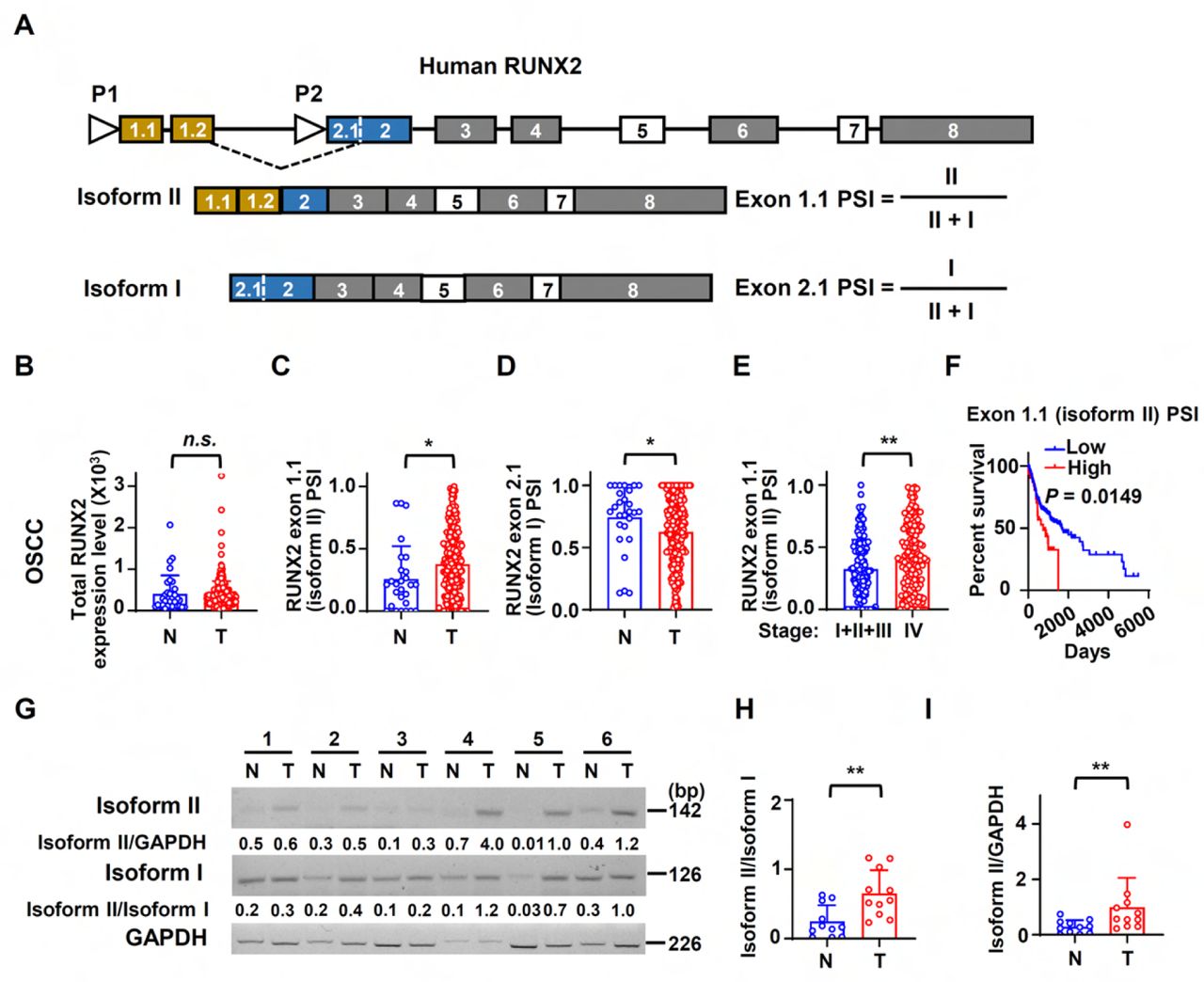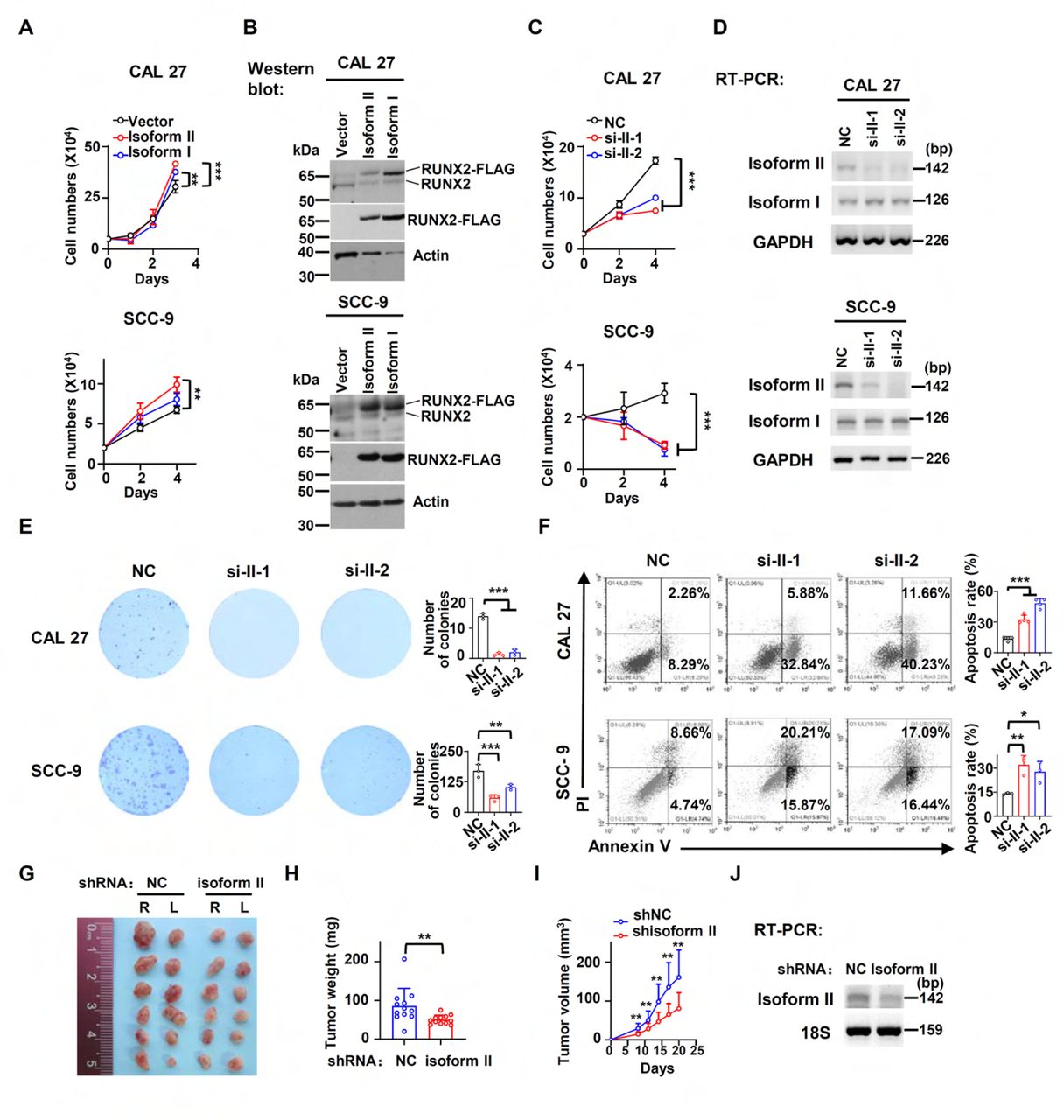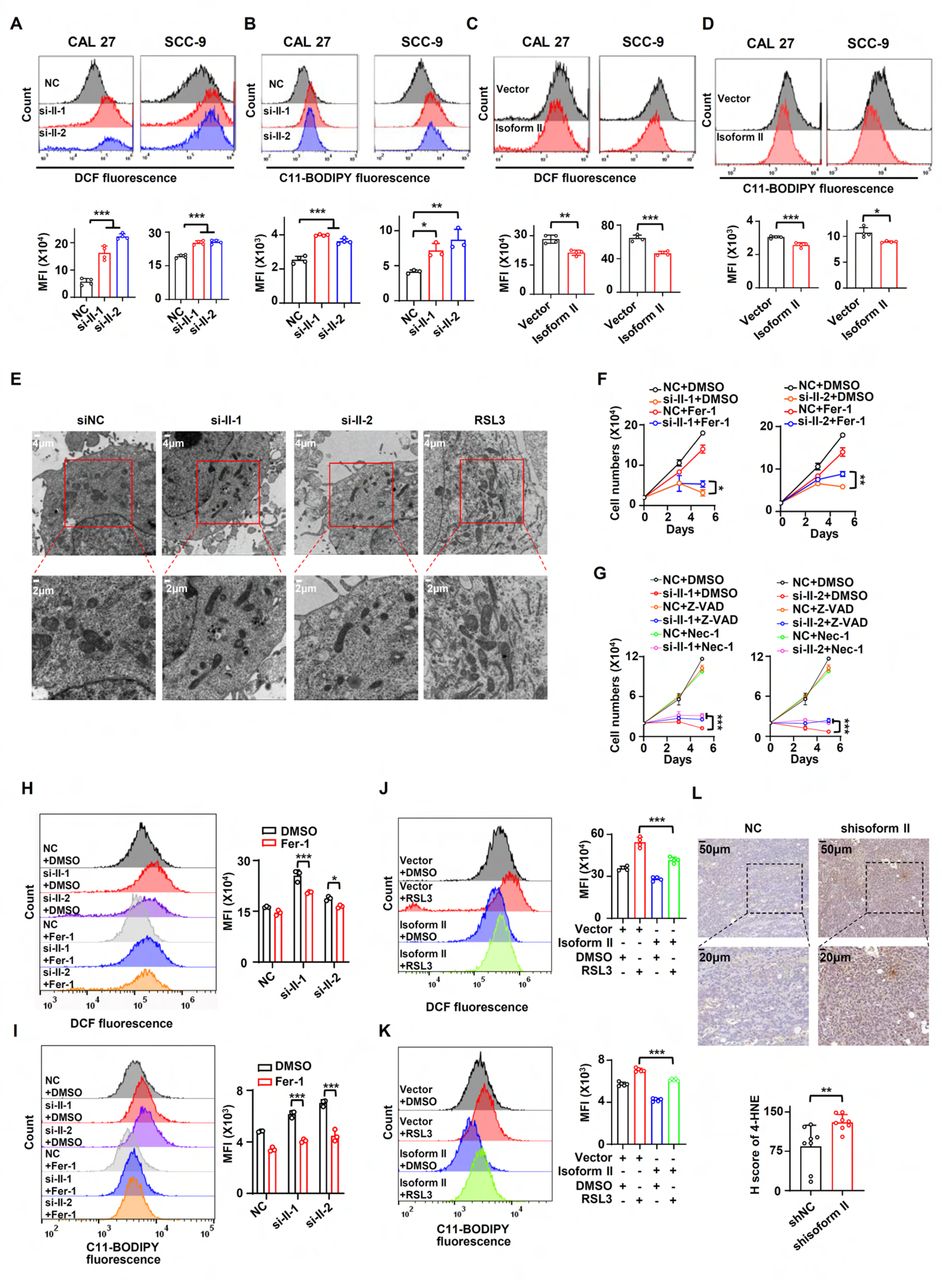Article Snippet
"Total cellular proteins were separated in 4-12% YoungPAGE Bis-Tris gels (GenScript, Nanjing, China) or 10% gels using One-Step PAGE Gel Fast Preparation Kit (Vazyme), transferred to nitrocellulose membrane (Pall Corporation, USA), followed by the block with 5% (w/v) non-fat milk (Servicebio) for 1 h. Then the membranes were incubated with mouse RUNX2 antibody (1:500, Santa Cruz, #sc-390351), rabbit FLAG antibody (1:2000, Proteintech, #20543-1-AP), rabbit PRDX2 antibody (1:2000, Proteintech, #10545-2-AP) and mouse actin antibody (1:5000, Proteintech, #66009-1-lg)."
Figure Legend
"Figure 1. Human RUNX2 isoform II is overexpressed and associated with poor prognosis in OSCC. (A) Schematic diagram of the isoforms and alternative promoters of the human RUNX2 gene. Boxes and lines represent exons or introns in the pre-mRNA, respectively. P1 and P2 represent promoters. Isoform II is transcribed from P1, while isoform I is transcribed from P2. Exon 5 and 7 are alternative exons. (B-D) The expression levels of total RUNX2 and isoforms in TCGA OSCC patients. (B) The normalized expression levels of total RUNX2, obtained from an online program, TSVdb, in normal (32 cases) or OSCC tissues (309 cases). (C, D) The PSI (percent-splice-in) values of exon 1.1 (isoform II) (C) and exon 2.1 (isoform I) (D) (total 288 cases with PSI values of exon 1.1 and exon 2.1) in normal (27 cases) and OSCC tissues (288 cases) were obtained from an online program, TCGA SpliceSeq. The PSI values represent the relative expression levels of individual isoform. (E) Comparison of exon 1.1 (isoform II) PSI between patients in stage I, II and III (132 cases) and those in stage IV (156 cases) of OSCC TCGA patients. (F) OSCC TCGA patients (total 287 cases with survival data) with low expression (254 cases) or high expression (33 cases) of exon 1.1 (isoform II) in OSCC. Low exon 1.1 (isoform II) PSI was defined as less than mean + 1.44SD (standard deviation). (G) The representative RT-PCR results of isoform II and isoform I in our OSCC or normal samples. GAPDH served as a loading control. (H-I) The scatter dot plot summarized the ratio of isoform II versus isoform I (isoform II/isoform I) (H) or the relative expression levels of isoform II (isoform II/GAPDH) (I) in our clinical OSCC (11 cases) and normal samples (11 cases). * P < 0.05, ** P < 0.01. "









